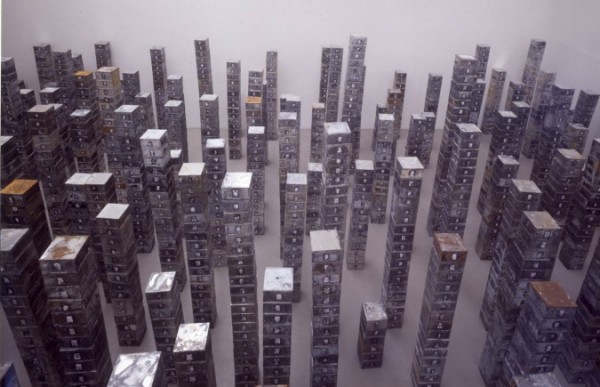Organizaciones con obra
Profesionales con obra
Descripción del Artista
Born in Kansas City, Missouri, in 1931, Morris studied painting at the Kansas City Art Institute before serving in the Army Corps of Engineers. He then went on to study philosophy at Reed College in the early 1950s. In 1959, Morris moved to New York City with his then-wife Simone Forti, who would become one of contemporary dance’s most innovative figures and with whom he participated in the Judson Dance Theater. He swiftly rose to fame after exhibitions at Green Gallery in 1963 and 1964 that featured humble geometric forms, such as gray plywood cubes and beams that upended viewers’ presumptions about art and caught the attention of fellow Minimalist artist and critic Donald Judd.
In 1964 he became a professor of art at Hunter College, where he stayed for three decades. In 1966—the same year he partook in the Jewish Museum’s watershed “Primary Structures” exhibition, curated by Kynaston McShine—Morris published a series of provocative essays in Artforum titled “Notes on Sculpture” in which he contextualized Minimalist art as being dependent on the context of its creation. Beginning in the late ’60s, Morris continued to trouble art’s possibilities through the post-Minimalism movement, which he championed in his Artforum essays “Anti-Form” (1969) and “Notes on Sculpture, Part IV: Beyond Objects” (1969). His oeuvre encompassed myriad forms and materials; Morris worked with aluminum, wood, mirrors, video, the human body, rags, felt, and earth—the latter most notably in Observatory, 1977, in Holland. During the 1980s, he swiveled to figurative painting with works that addressed nuclear anxiety.

Creación, 11 jul de 2016
El Premio Julio González, dotado con 20.000 Euros a partir de su próxima edición
Por PAULA ALONSO POZA
El premio seguirá incluyendo la muestra del ganador en el IVAM y tendrá carácter bienal.

Exposición. 11 abr de 2025 - 28 sep de 2025 / Museo Guggenheim Bilbao / Bilbao, Vizcaya, España

Formación. 08 may de 2025 - 17 may de 2025 / Museo Nacional Centro de Arte Reina Sofía (MNCARS) / Madrid, España